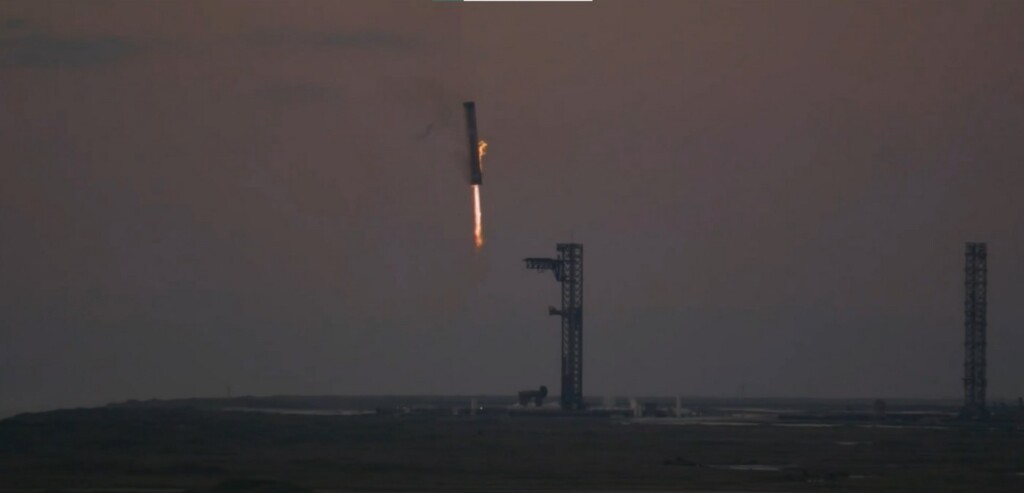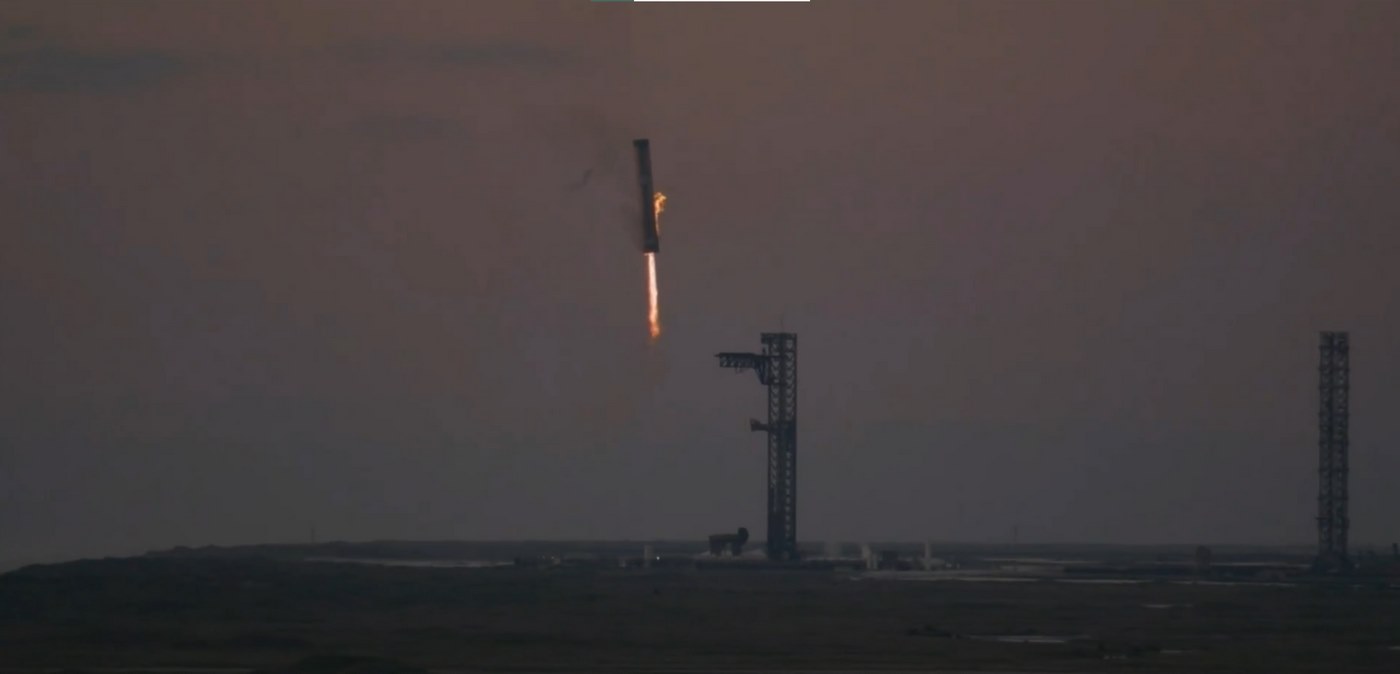
The 5th test launch of the SpaceX Starship vehicle came with a party trick—a landing—which it stuck.
Not since the Moon landings has an American been able to say with as much certainty that they witnessed something straight out of science fiction—a vessel coming down from space and landing on the Earth using jet propulsion.
The footage is unforgettable and documents a truly staggering accomplishment, as not only is the Starship the first reusable rocket to land using propulsion, but the Starship is the largest, heaviest, and most powerful flying object ever made by humans.
The videos below show footage from different angles.
The maneuver saw the Starship’s enormous first-stage booster, the rocket component needed to push the craft out of the atmosphere, glide in free fall down from the sky before activating thrusters to slow and guide its descent; eventually parking on a dime next to the launch tower’s “chopstick” arms which literally grab it.
“This is a day for the engineering history books,” Kate Tice, SpaceX manager of Quality Systems Engineering, said during live commentary as SpaceX employees screamed and cheered at the company’s Hawthorne, California headquarters behind her.
“This is absolutely insane! On the first-ever attempt, we have successfully caught the Super Heavy booster back at the launch tower.”
“Are you kidding me?” SpaceX spokesperson Dan Huot added from the launch site. “Even in this day and age, what we just saw—that looked like magic.”
— Elon Musk (@elonmusk) October 14, 2024
Sometimes things do work after all https://t.co/ApGw5wLHHD
— Elon Musk (@elonmusk) October 16, 2024
The second component of the Starship rocket made it to orbit as intended, before re-entering Earth’s atmosphere, activating 3 of its 6 boosters as it hovered over the Indian Ocean—another demonstration success, before exploding.
This is Starship’s 5th test flight. The vehicle has been designed according to SpaceX Founder Elon Musk’s dream of landing humans on Mars during his lifetime. NASA has piggybacked on his ambition, ordering several Starships for the upcoming Artemis missions that aim to return humanity to the Moon with the purpose of establishing a semi-permanent lunar presence.
The historic moment comes just one month after a member of the crew onboard the SpaceX Dragon capsule performed the first-ever civilian spacewalk, proving the design of SpaceX’s new lightweight spacesuits, worn by the crew to travel seamlessly in and out of the capsule.
An analysis by NASA found that the SpaceX Falon 9 has reduced the cost of a rocket launch by a factor of 20. The cost of a Falcon 9 and Dragon capsule mission to ISS is about $140 million with a payload of 6,000 kg, $23,300/kg, compared to the Space Shuttle which was about $1.5 billion.
The analysis was made when Falcon 9 rockets fell back down to Earth to be destroyed. To aid in humanity becoming a multi-planetary species, that cost has to continue to fall substantially, and a rocket that needs only to be refueled rather than rebuilt is a major step toward making space travel around the same cost structure as commercial aviation.
THE FOLLOWING VIDEO CONTAINS CELEBRATORY PROFANITY…
Watching this one over and over pic.twitter.com/NODBkBaerd
— piet (@piet_dev) October 14, 2024
Watching this one over and over pic.twitter.com/NODBkBaerd
— piet (@piet_dev) October 14, 2024
SHARE This Chapter In The Engineering History Books With Your Friends…




















